Note: Pick up the free checklist to go along with this case study. It gives you a step-by-step guide to implement this strategy.
How do you get 100,000 Youtube views and 764 new subscribers?
Below is a detailed case study of exactly how Pat Flynn did just that. Pat runs smartpassiveincome.com, a blog on internet marketing. He calls himself the crash test dummy for business. On top of running his blog and multiple side businesses he also produces a weekly podcast which regularly ranks as one of the top business podcast in iTunes.
In October 2012 Pat published a Youtube videos series that brought some jaw dropping numbers. We will break down exactly what he did, look at his results, examine what he could have done better and show you how you can do the same.
RESULTS
There is a direct correlation between the number of people that visit your website and the amount of sales you have. As a result everyone wants to know HOW to get more traffic.
Early on Pat chose to use ‘giving’ as his #1 tactic. He creates high qualities guides, books and articles and gives them away for free. This may sound counter intuitive but hang with me. After you see the results, I have a feeling you might be convinced that his strategy will work for you too.
Last year Pat created a course called How to Start a Podcast. This course consisted of a series of 6 videos that shows you how to setup and launch a podcast. It covers everything from the technology you need all the way to booking high quality guest for your show. He covers everything he has learned to get his podcast to where it is and shows you how to do exactly the same thing.
Most people would make this course and then try to sell it for anywhere from $100 to $1000 dollars. Pat didn’t. He gave it away for free.
The following are his results:

The results (Course was Published in October 2012):
- 410 backlinks
- 257 Facebook shares
- 300 Facebook likes
- 425 Tweets
- 116 Google +’s
- 784 new Youtube subscriber
- 99,206 views
- 9912 hours of watch time
- 784 new Youtube subscriptions
What is all of that worth? If you compare the nearly 100,000 views he received with what that traffic would cost if purchased via Pay Per Click (PPC) advertising he would have had to pay $29,761 (based on $0.30 per click). Pat reported that the videos took him approximately 30 hours to create. That comes out to right at $1,000 per working hour to create the videos.
Those 100,000 views only includes the people that actually watched the videos. How many other saw one of the 425 tweets, 300 Facebook likes or 116 Google+ posts about it? How much brand equity was built as a result?
How much are his 784 additional Youtube subscribers worth?
How much trust was built between him and the 100,000 people that spent nearly 10,000 hours watching?
Some things, like trust, aren’t quantifiable but they have a gigantic impact on your business. (read: “Who cares if your customers trust you?“)
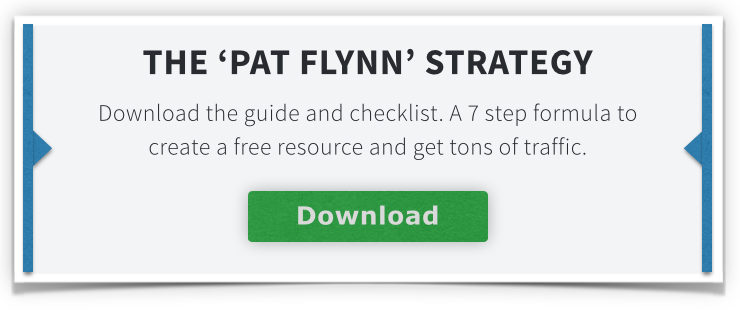
STRATEGIES
So, thats great that Pat had so much success. The big question is, ‘How can I do that same thing?’ Below at 6 key techniques that Pat used to ensure the success of his course.
1. Make a playlist: Making a play lists groups every video together in one spot. By making a “How to Start a Podcast” playlist it enables the viewer to easily walk through each video without having to search through Pat’s Youtube channel to find all subsequent videos. This increases the likelihood that the viewer will not be distracted by other non-related videos in the sidebar or by video ads at the end of each video. Another big benefit to playlist is that you can share the playlist URL and when someone visits that playlist they can start right in on the series.

Another key element to creating a playlist is bookmarking it on your Youtube channel homepage. This makes it easy for anyone that comes to your channel to find the series and start watching it.

2. Annotations: Pat uses two different type of video annotations throughout the course. The first is a navigation annotation. This allow the user to easily navigate between the current video and the first video in the course. The primary function of this is to capture viewers who have just landed on video #2-6 but haven’t seen the first video in the series. This drives them back to the beginning of the series and lets them watch them in order. This particular annotation is in all of the videos except the 1st one and is a contributing factor as to why the 1st video has more than double the views as all of the others.
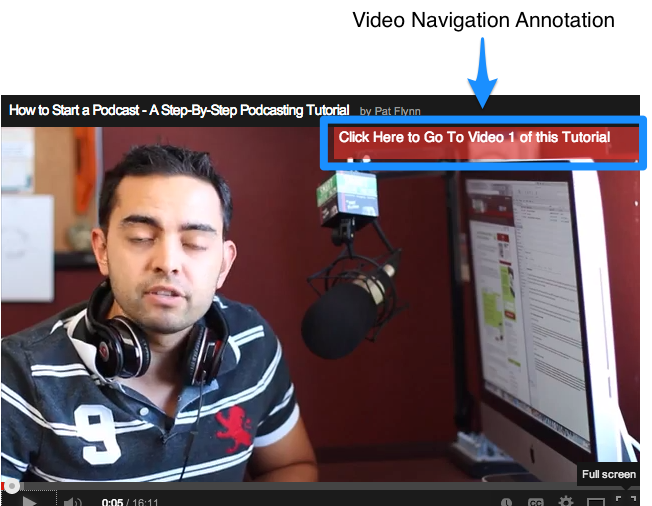
The second type of annotation used by Pat is a subscribe box. This is mainly prompted at the end of each of his videos and allows the viewer to easily subscribe to his channel and be notified of future video uploads. We have found that prompting the user to subscribe to your Youtube channel increases the likelihood of them doing so by over 60%. Thus, we can attribute 470 of the 784 new subscribers to this.
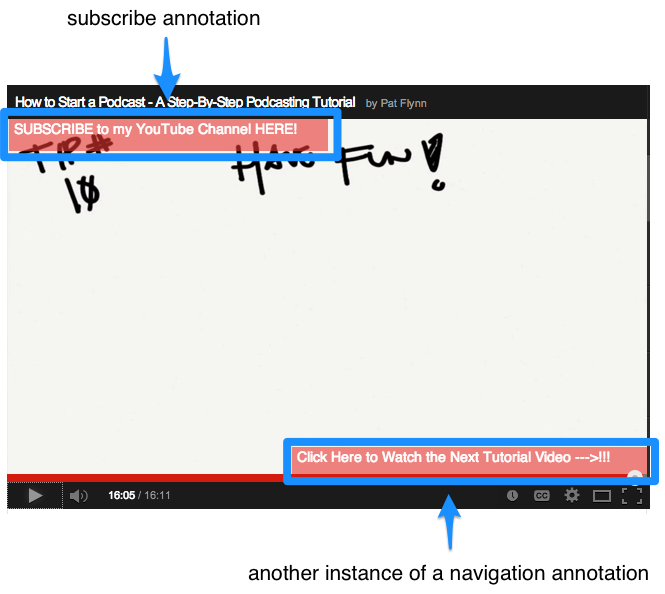
3. Metadata: Pat did an excellent job with providing a good title and description for each video. The title is an important piece of meta data used by Google when indexing your video for search in the main Google search results and inside of Youtube itself. Although this isn’t the sole contributor to video ranking it plays a big part. Google places special importance on the first words in your title. It is no coincidence that Pat started all of his titles with “Podcast Tutorial.” The results of this are evident by the video listing #1 for “Podcast Tutorial” in both Google and Youtube.
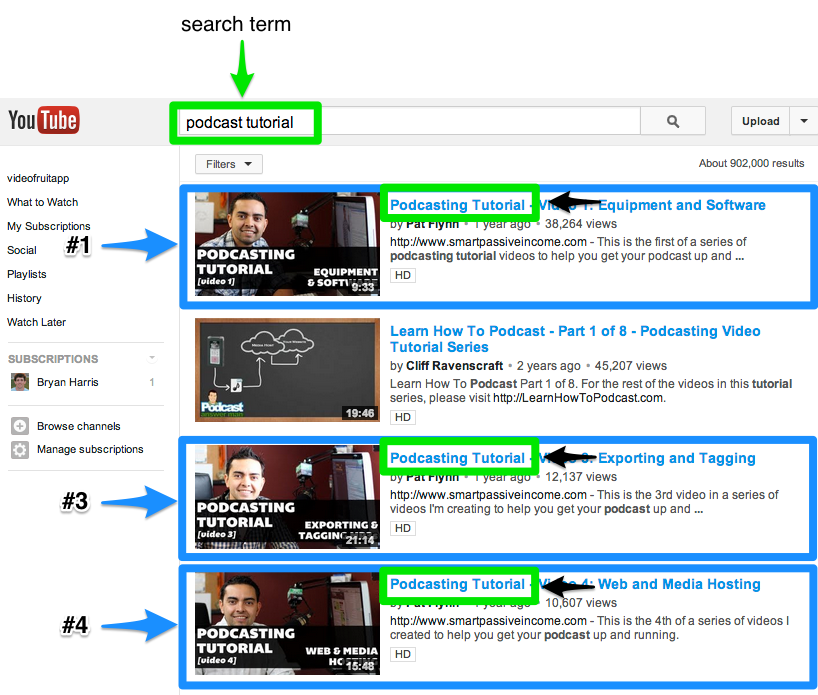
Having a thorough video description is another key technique used by Pat. This helps him cross-pollinate traffic. Pat does three things in each description. First, he gives a short brief of what the video series is about. Second, he gives a list of relevant links to items he touched on in the video. Last, he links to every other video in the series making it easy for the viewer, who might have gone to an individual video and not the play list, to navigate.
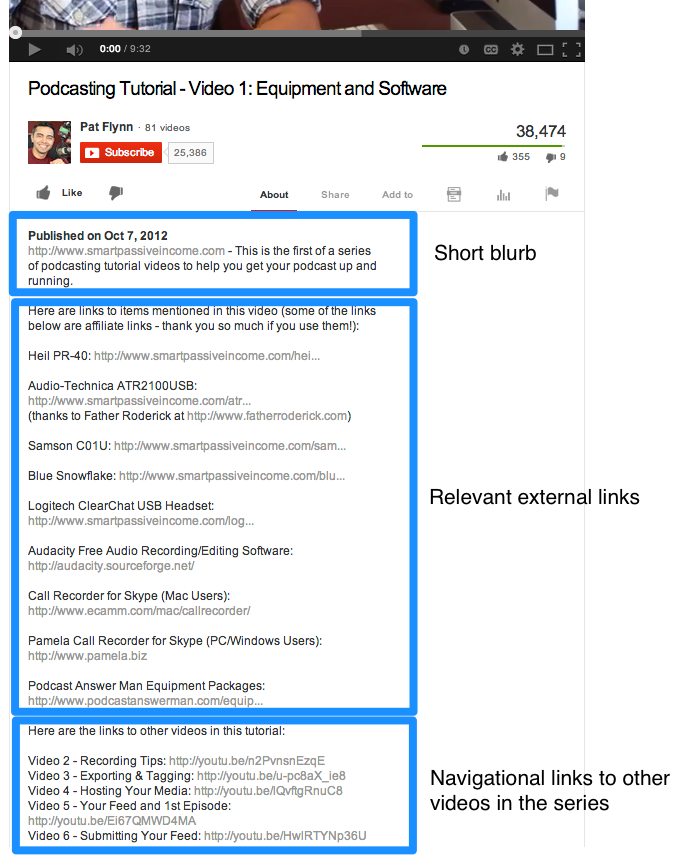
4. Active in the comments: Pat does a great job in each video of engaging with commenters. There is a substantial causation between how engaged the author of a video is and how many views they receive. Video #1 had 50% more comments than Video #2 and received 42% more views. Pat does a great job of commenting on the individual video pages and on his landing page on his website that houses the series.
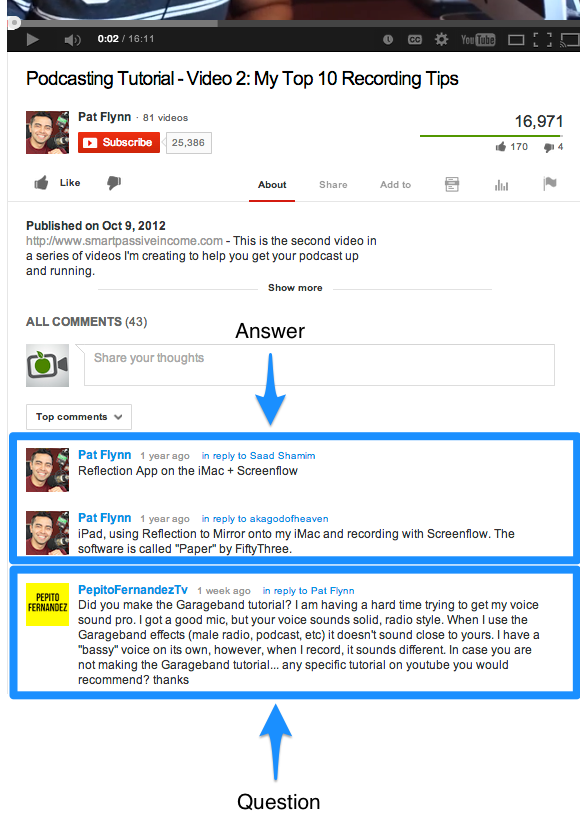
5. Easy to Spread: At the bottom of the “How to Start a Podcast” page is a ‘click to tweet’ link that makes it very easy for visitors to spread the word. All they have to do is click the link and they are immediately taken to their twitter account with a pre-filled tweet ready to send.

6. Worth Talking About: This video series has been well optimized, no doubt. But at the end of the day, all of the things listed above are simply amplifiers on the quality of product that he has created. Said another way, if you create a useful and high quality product like Pat has done, then it will do well if you use the above techniques to help it spread. But if what you create is a hack job, helps no one and is just bad, do not expect similar results.
Pat’s product was so useful and well done that it was talked about by several other high profile bloggers with very similar audiences. The landing page of his tutorial was tweeted out of 400 times.Below is one example where Michael Hyatt tweeted out about the course on March 30th, 2013 and drove over 400 visitors to the page with one tweet. Multiply that by 300 Facebook likes, 116 Google+ and 410 backlinks and you have the recipe for a viral video series that gets 100,000 views.
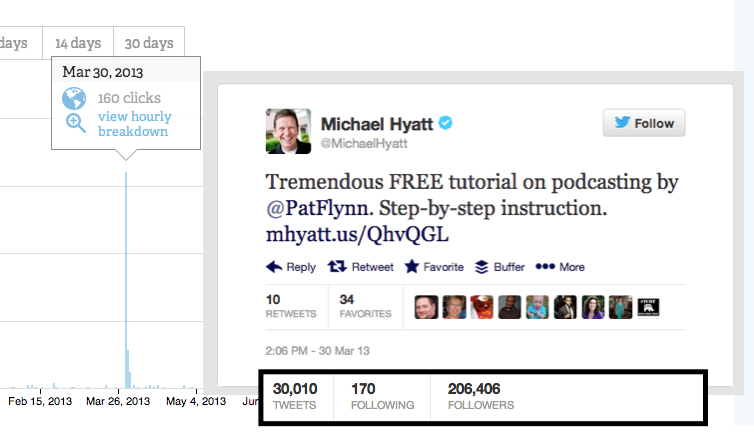
IMPROVEMENTS
1. Drive traffic home: A key optimization that should be made to this series is to make a concerted effort to drive his Youtube viewers back to the smartpassiveincome.com website. If only 5% of the viewers followed this path he could have increased his email subscribers by nearly 4,960 members over the past 13 months and send 10’s of thousands of visitors to the site.] One key technique he could use to do that is to change his meta-description navigational links to point to his personal website instead of the Youtube video. This would give the visitors a chance to sign up for his email list or engage with them more deeply on his blog.
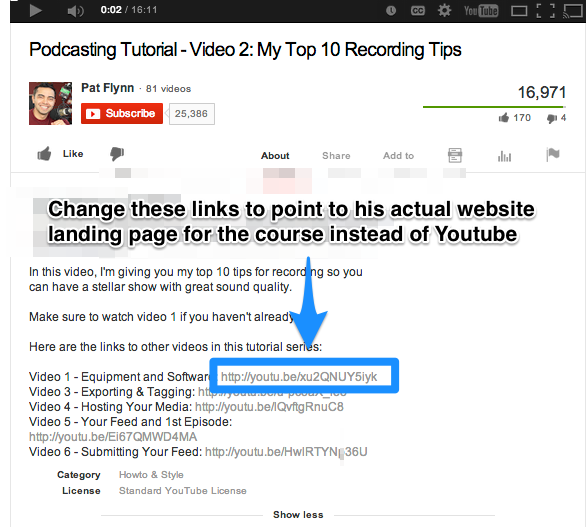
A second technique that could be implemented is to create a external link annotation that would send the user to a landing page on Pat’s site to allow email signups for the course to be delivered to them over a period of time. Along with this, he could also send all of his in video navigational annotations mentioned previously back to his personal landing page instead of the Youtube playlist.
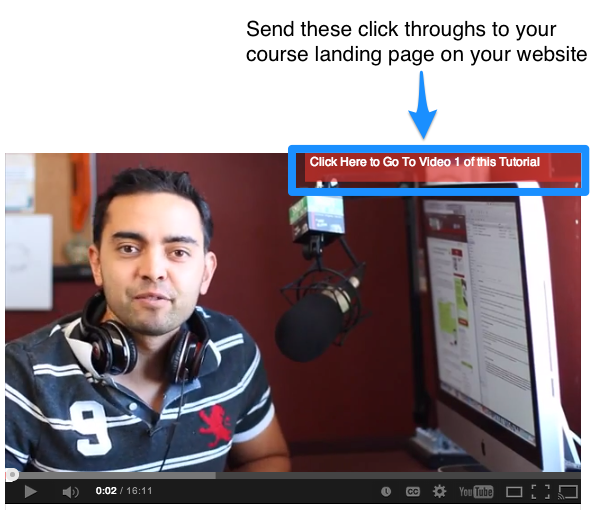
2. Up-sale: This is where things get very interesting. This free series is an entry level product. According to 820curve.com and the science behind the 80/20 principle, 2.7% of the people who take this free course would be willing to pay for a premium version that goes into more detail and offers more hands on training and examples. That looks like this: 2,772 people would pay $125 for a higher-end podcasting course. That is a potential profit of $346,500 of sales. It also tells us that there is substantial room to grow this product with a mid-level offering as well. Approximately 10,000 of the total viewers would be pay $40 for a mid-level product built around this same product line. That would be a total of $400,000 in sales. All together Pat has potential growth of $746,500 of sales in premium offerings built around this free product.
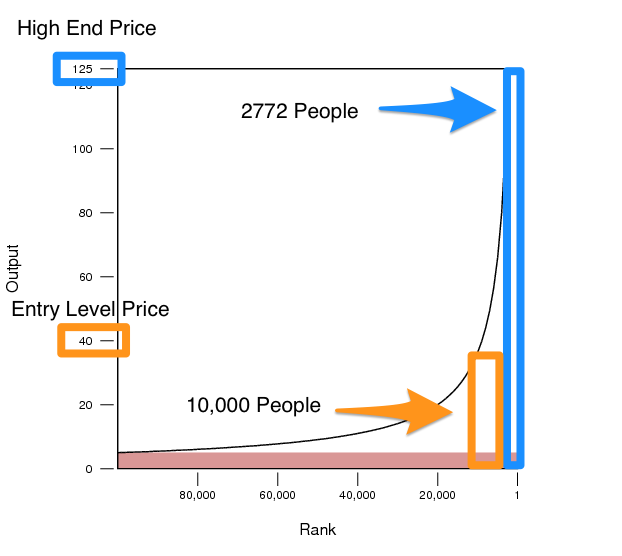
3. Giveaway on Podcast: At the end of each weekly podcast blog post, Pat promotes his email list. Due to the the type of person visiting this page and the fact that the blog post is coming in the form of a podcast, it would be advisable to insert a email option with the podcast tutorial as a giveaway instead of an eBook about creating an eBook. Based on research by Clay Collins at LeadPages the more relevant the giveaway is to a specific blog posts and its content matter the higher the opt-in rate. We estimate a 5% increase in email opt-ins with this improved offering.
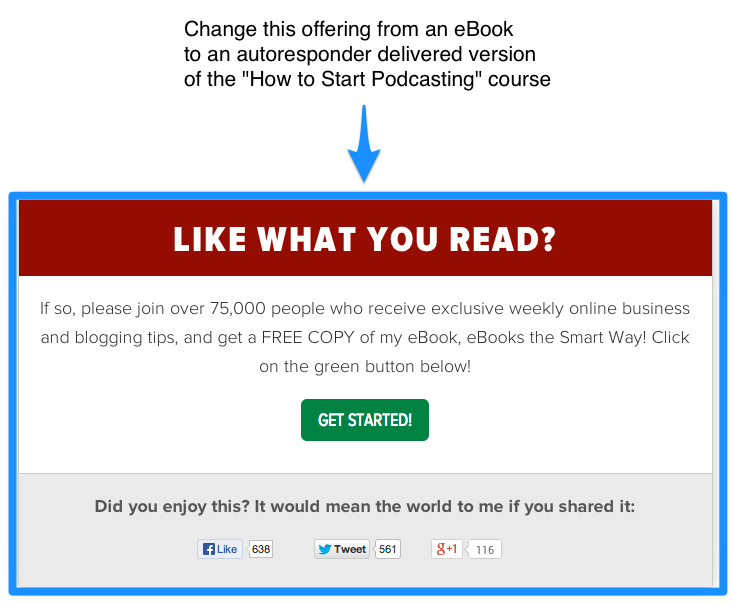
TAKEAWAYS
1. Just because someone else is doing something similar doesn’t mean you can’t create a similar product offering. Chris Ravenscraft has an almost identical series out that was published a year earlier and Pat has nearly as many views in half the time. People want to hear from you because they trust you. Don’t let the fact that something similar might exist keep you from creating your own version.
2. Giving away free things is a highly effective way to grow your following and build up credit as an expert in your field. It can also be a great gateway into paid for products that can be sold once the you have built trust.
3. Capturing leads off of Youtube and turning them into repeat viewers and loyal fans takes a concerted effort. One great way to do that is leaving external links in the description field and making out linking annotations in the video itself.
How can you emulate Pat’s course? Is there a simple course you can put together in your industry?
Learn more about creating and using video for your business here.
Question: Do you have a similar experience to Pat? Tell us about it below.

